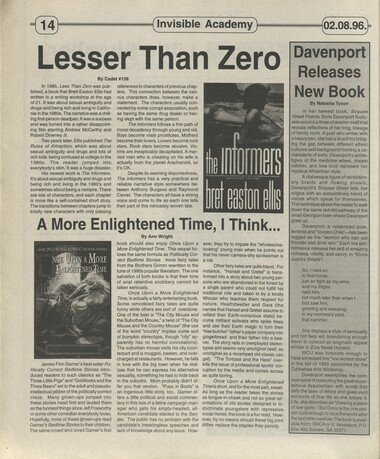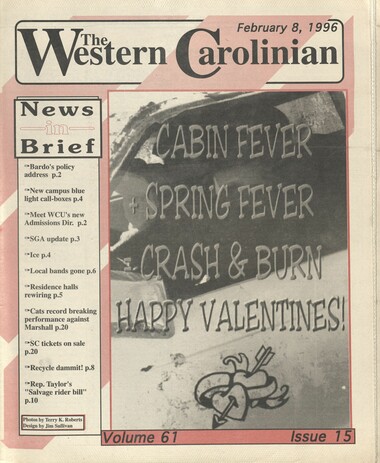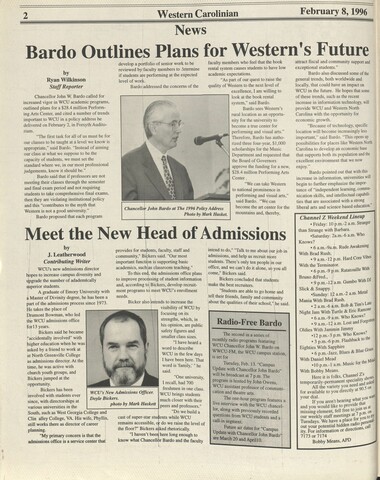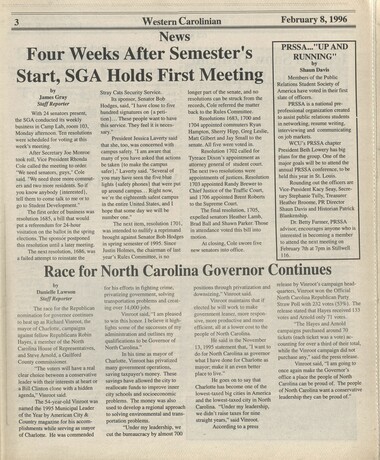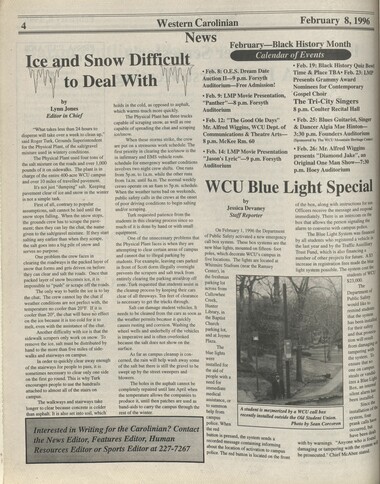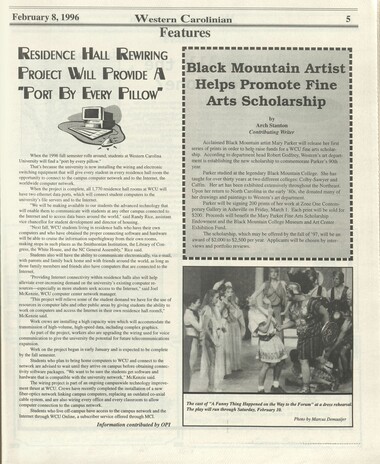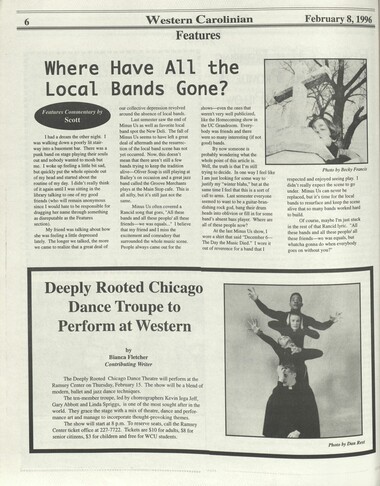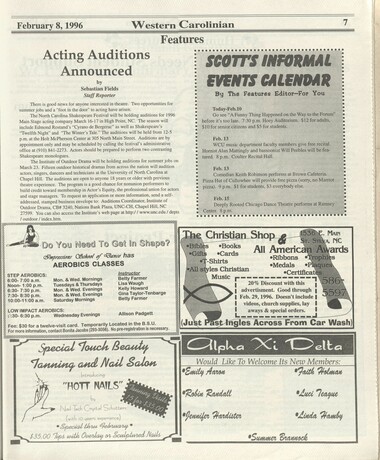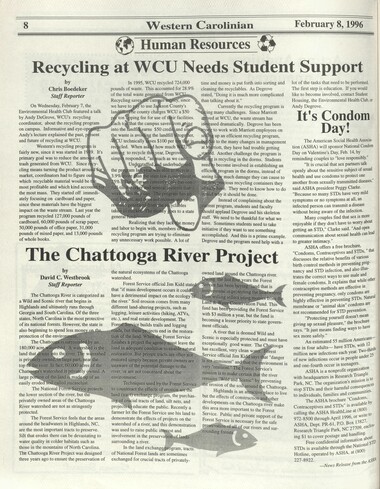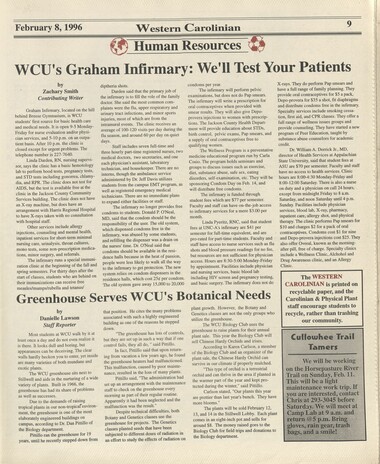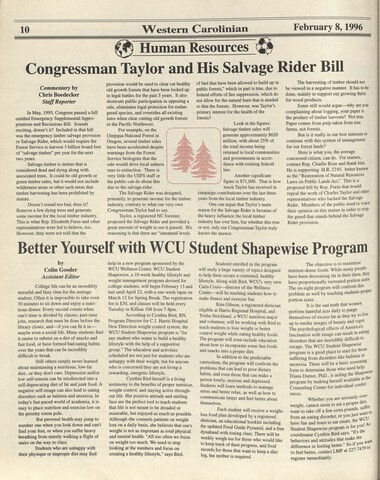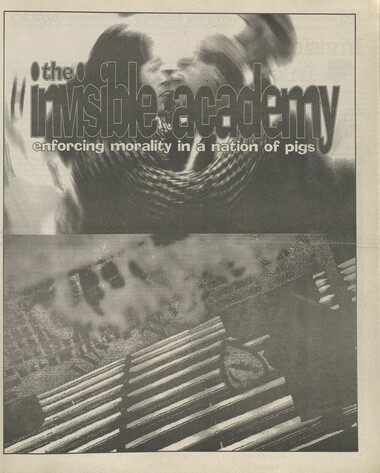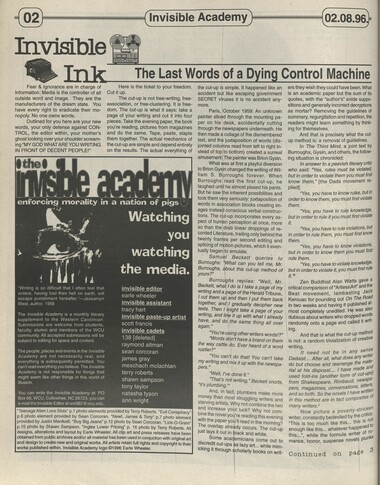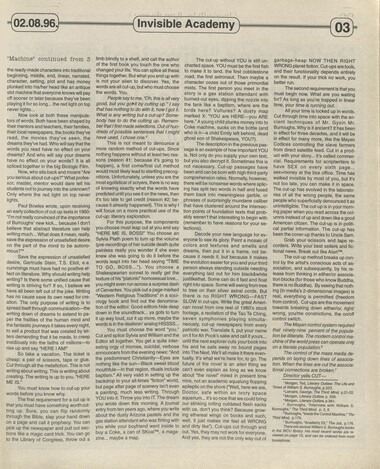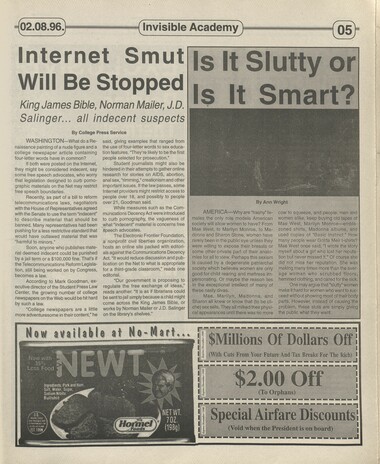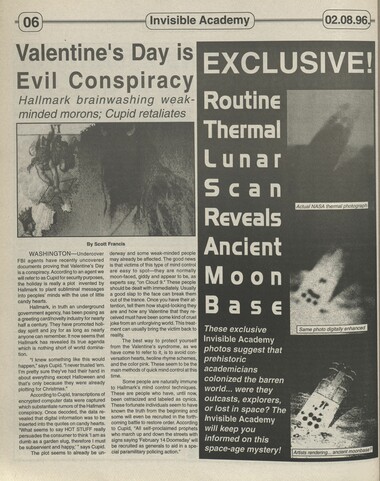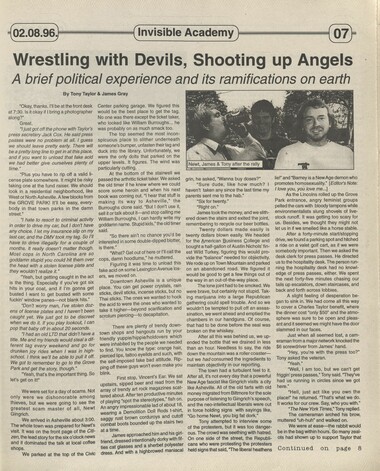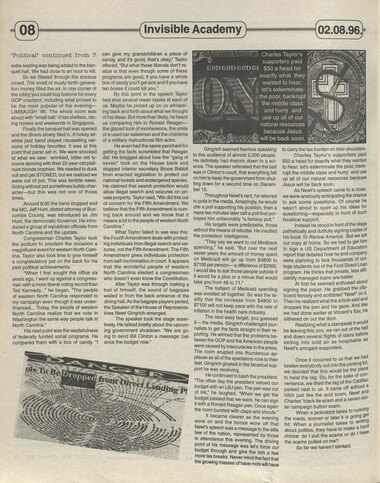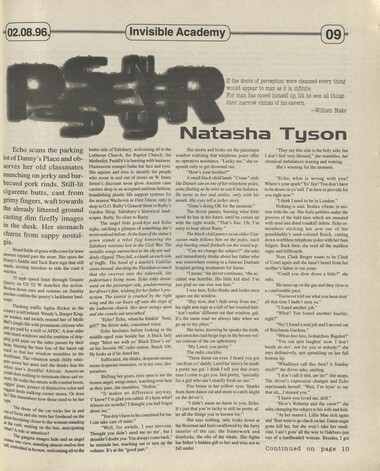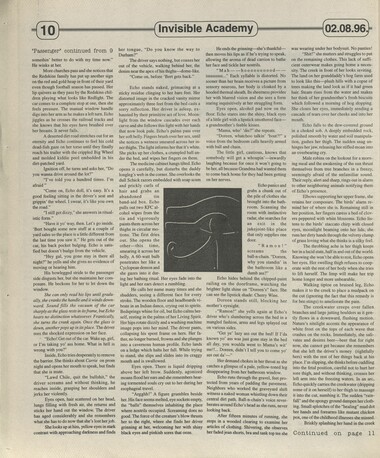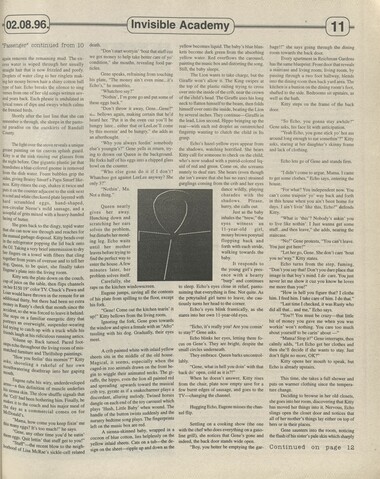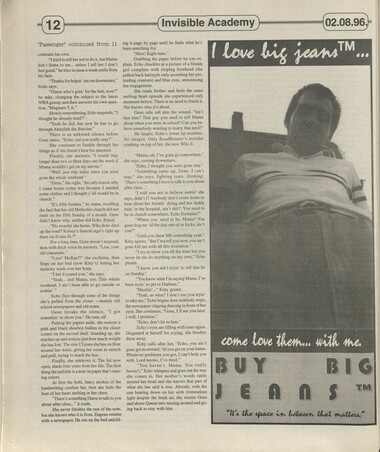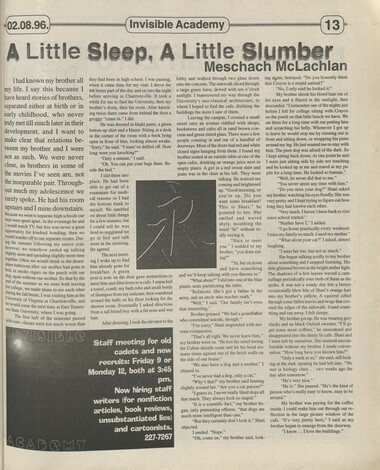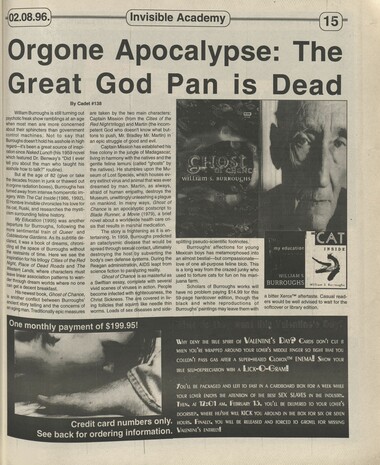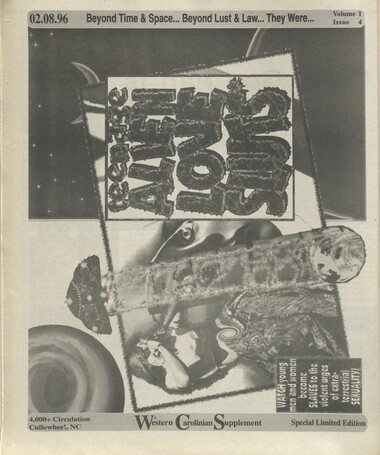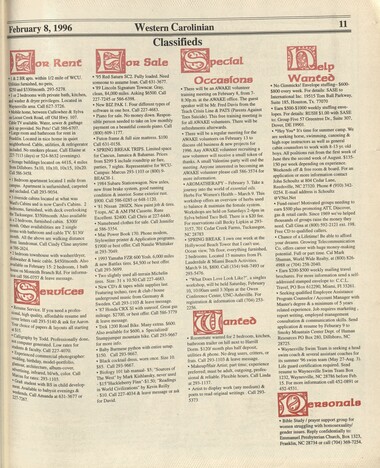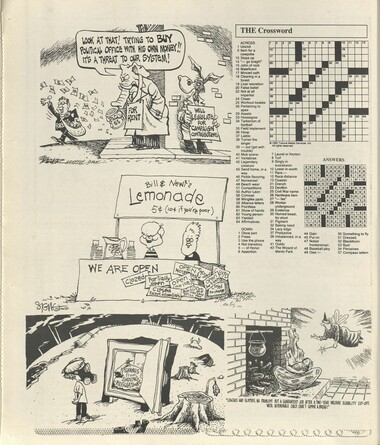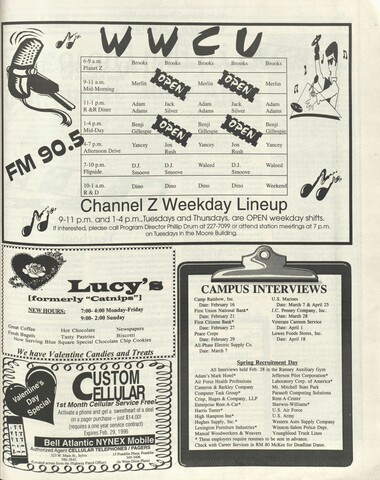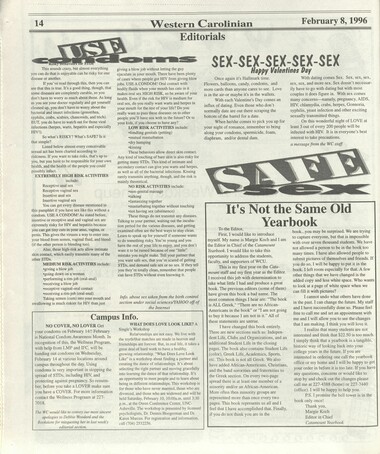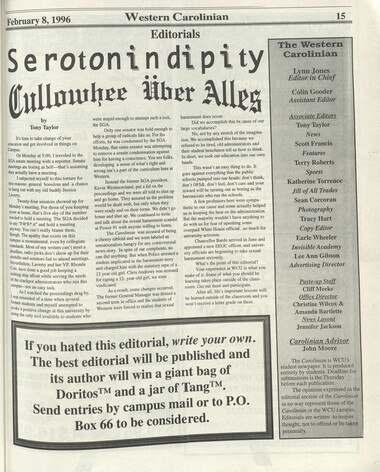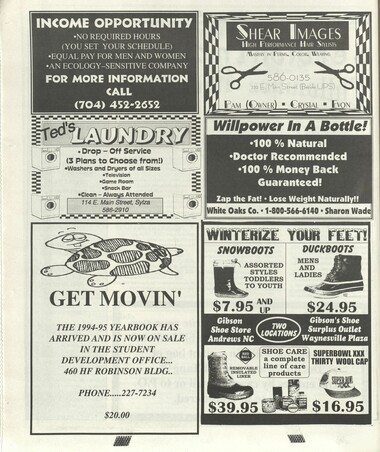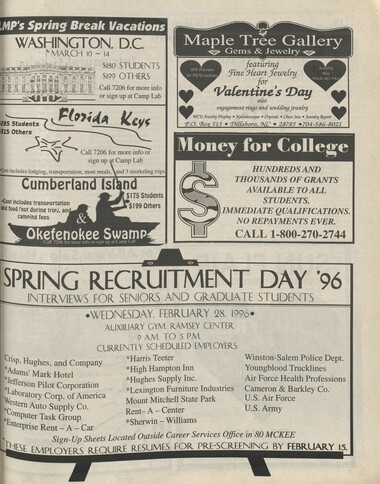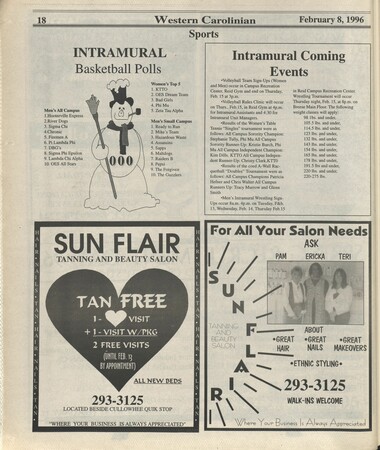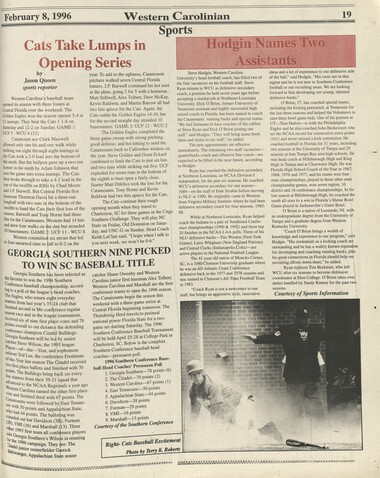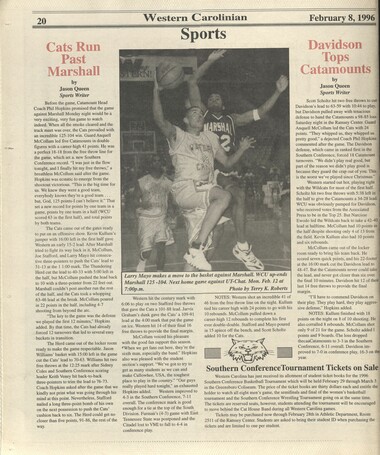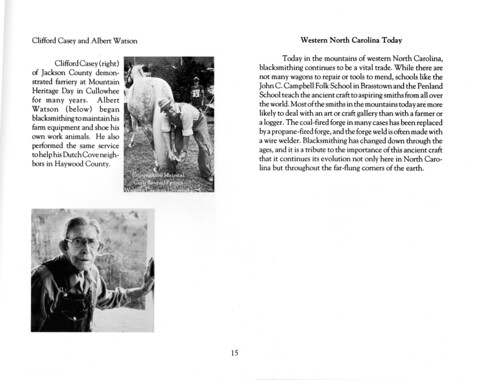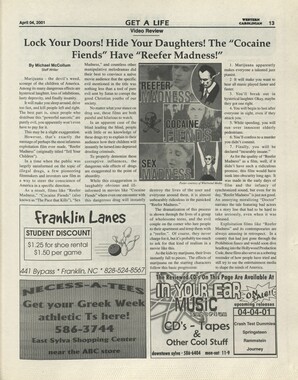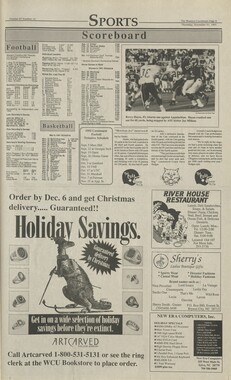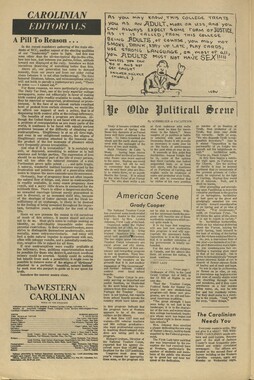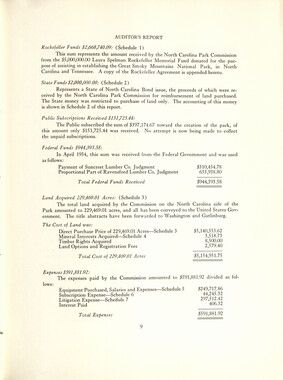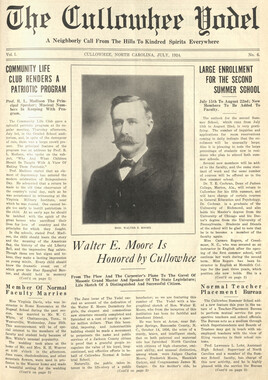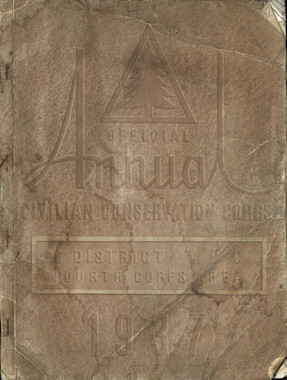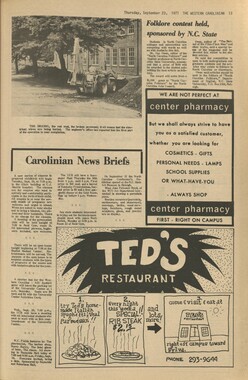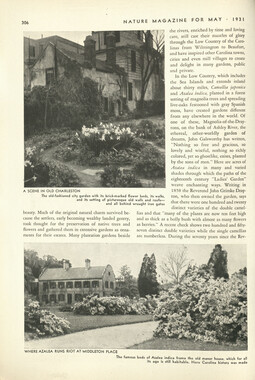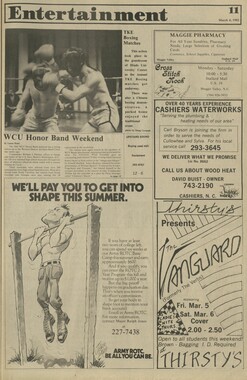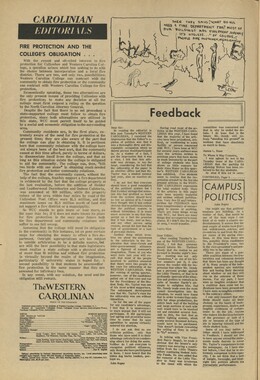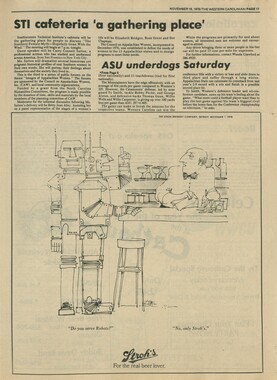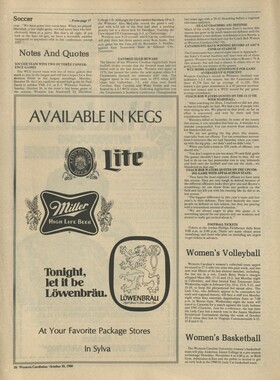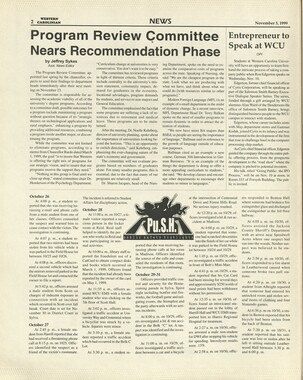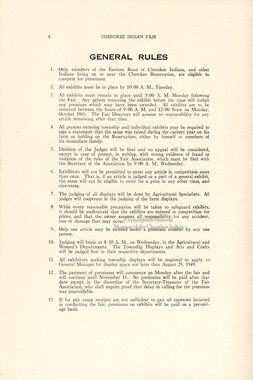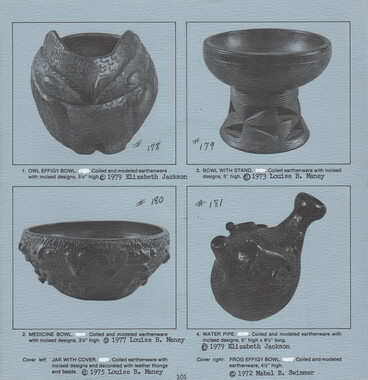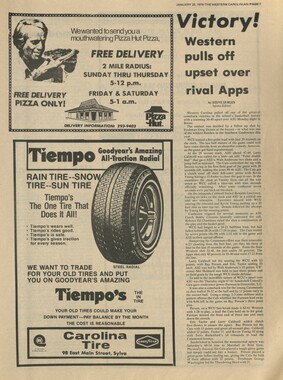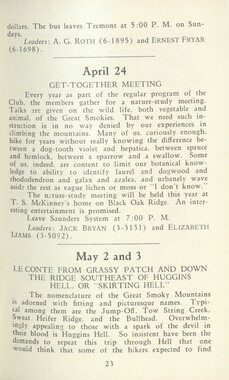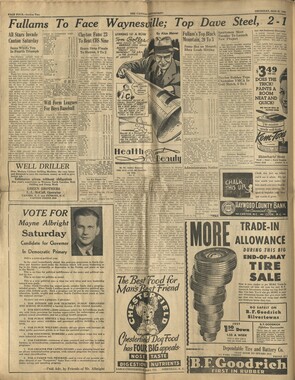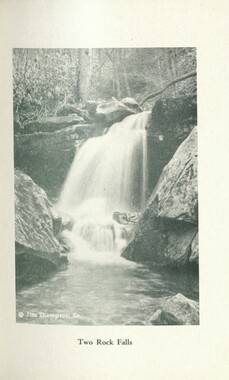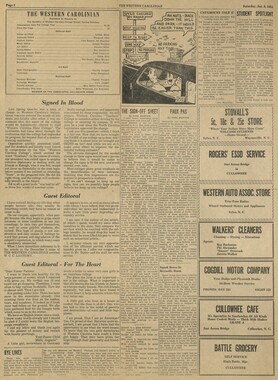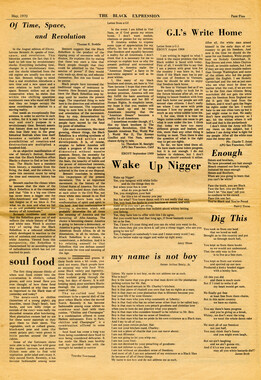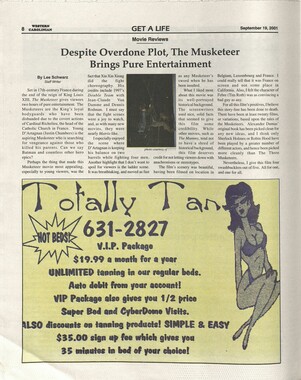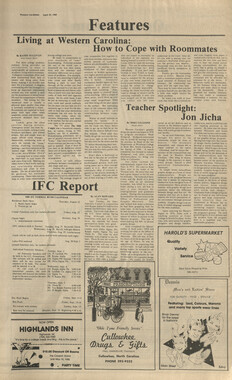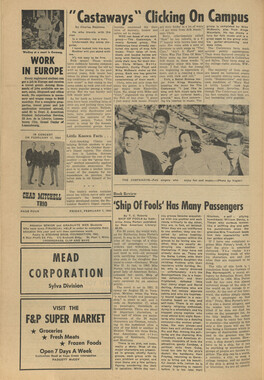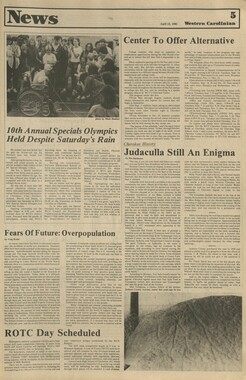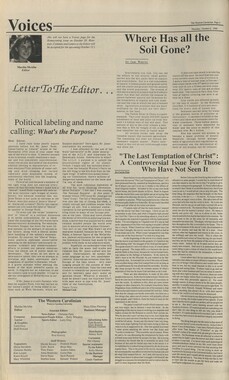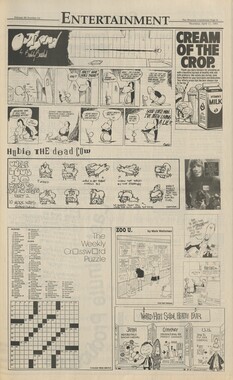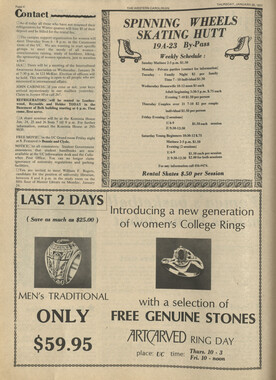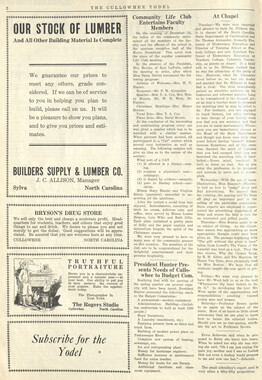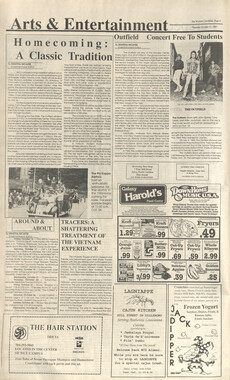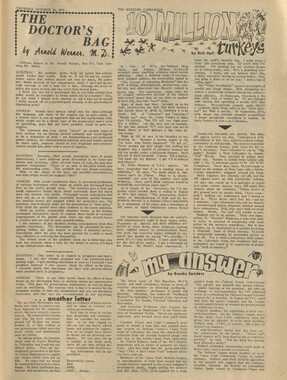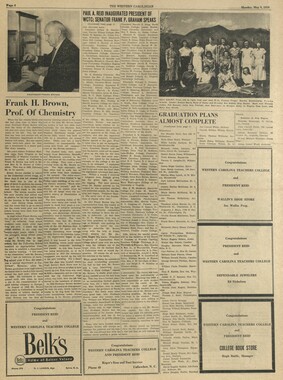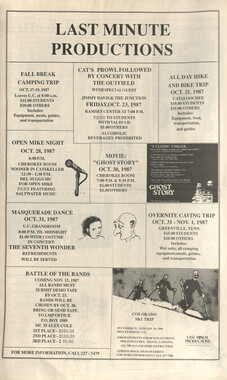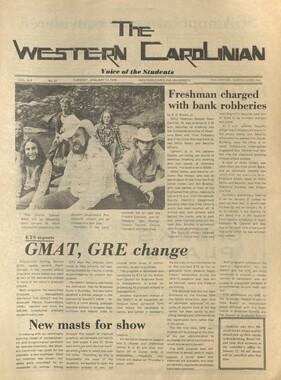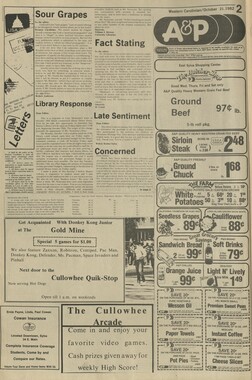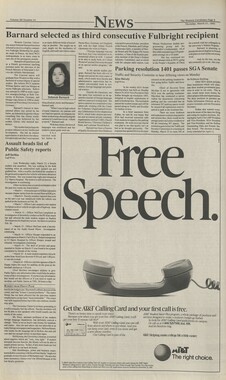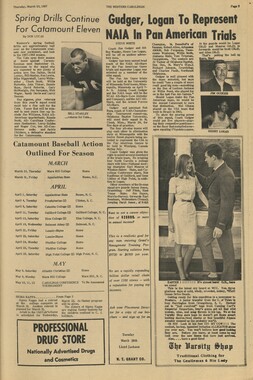Western Carolina University (20)
View all
- Canton Champion Fibre Company (2308)
- Cherokee Traditions (292)
- Civil War in Southern Appalachia (165)
- Craft Revival (1942)
- Great Smoky Mountains - A Park for America (2766)
- Highlights from Western Carolina University (430)
- Horace Kephart (941)
- Journeys Through Jackson (154)
- LGBTQIA+ Archive of Jackson County (85)
- Oral Histories of Western North Carolina (314)
- Picturing Appalachia (6772)
- Stories of Mountain Folk (413)
- Travel Western North Carolina (160)
- Western Carolina University Fine Art Museum Vitreograph Collection (129)
- Western Carolina University Herbarium (92)
- Western Carolina University: Making Memories (708)
- Western Carolina University Publications (2283)
- Western Carolina University Restricted Electronic Theses and Dissertations (146)
- Western North Carolina Regional Maps (71)
- World War II in Southern Appalachia (131)
University of North Carolina Asheville (6)
View all
- Allanstand Cottage Industries (62)
- Appalachian National Park Association (53)
- Bennett, Kelly, 1890-1974 (1388)
- Berry, Walter (76)
- Brasstown Carvers (40)
- Carver, George Washington, 1864?-1943 (26)
- Cathey, Joseph, 1803-1874 (1)
- Champion Fibre Company (233)
- Champion Paper and Fibre Company (297)
- Cherokee Indian Fair Association (16)
- Cherokee Language Program (22)
- Crowe, Amanda (40)
- Edmonston, Thomas Benton, 1842-1907 (7)
- Ensley, A. L. (Abraham Lincoln), 1865-1948 (275)
- Fromer, Irving Rhodes, 1913-1994 (70)
- George Butz (BFS 1907) (46)
- Goodrich, Frances Louisa (120)
- Grant, George Alexander, 1891-1964 (96)
- Heard, Marian Gladys (60)
- Kephart, Calvin, 1883-1969 (15)
- Kephart, Horace, 1862-1931 (313)
- Kephart, Laura, 1862-1954 (39)
- Laney, Gideon Thomas, 1889-1976 (439)
- Masa, George, 1881-1933 (61)
- McElhinney, William Julian, 1896-1953 (44)
- Niggli, Josephina, 1910-1983 (10)
- North Carolina Park Commission (105)
- Osborne, Kezia Stradley (9)
- Owens, Samuel Robert, 1918-1995 (11)
- Penland Weavers and Potters (36)
- Roberts, Vivienne (15)
- Roth, Albert, 1890-1974 (142)
- Schenck, Carl Alwin, 1868-1955 (1)
- Sherrill's Photography Studio (2565)
- Southern Highland Handicraft Guild (127)
- Southern Highlanders, Inc. (71)
- Stalcup, Jesse Bryson (46)
- Stearns, I. K. (213)
- Thompson, James Edward, 1880-1976 (226)
- United States. Indian Arts and Crafts Board (130)
- USFS (683)
- Vance, Zebulon Baird, 1830-1894 (1)
- Weaver, Zebulon, 1872-1948 (58)
- Western Carolina College (230)
- Western Carolina Teachers College (282)
- Western Carolina University (1794)
- Western Carolina University. Mountain Heritage Center (18)
- Whitman, Walt, 1819-1892 (10)
- Wilburn, Hiram Coleman, 1880-1967 (73)
- Williams, Isadora (3)
- Cain, Doreyl Ammons (0)
- Crittenden, Lorraine (0)
- Rhodes, Judy (0)
- Smith, Edward Clark (0)
- Appalachian Region, Southern (2569)
- Asheville (N.C.) (1923)
- Avery County (N.C.) (26)
- Blount County (Tenn.) (161)
- Buncombe County (N.C.) (1672)
- Cherokee County (N.C.) (283)
- Clay County (N.C.) (555)
- Graham County (N.C.) (233)
- Great Smoky Mountains National Park (N.C. and Tenn.) (519)
- Haywood County (N.C.) (3524)
- Henderson County (N.C.) (70)
- Jackson County (N.C.) (4694)
- Knox County (Tenn.) (25)
- Knoxville (Tenn.) (12)
- Lake Santeetlah (N.C.) (10)
- Macon County (N.C.) (420)
- Madison County (N.C.) (212)
- McDowell County (N.C.) (39)
- Mitchell County (N.C.) (132)
- Polk County (N.C.) (35)
- Qualla Boundary (981)
- Rutherford County (N.C.) (76)
- Swain County (N.C.) (2115)
- Transylvania County (N.C.) (270)
- Watauga County (N.C.) (12)
- Waynesville (N.C.) (84)
- Yancey County (N.C.) (72)
- Aerial Photographs (3)
- Aerial Views (60)
- Albums (books) (4)
- Articles (1)
- Artifacts (object Genre) (228)
- Bibliographies (1)
- Biography (general Genre) (2)
- Cards (information Artifacts) (38)
- Clippings (information Artifacts) (191)
- Crafts (art Genres) (622)
- Depictions (visual Works) (21)
- Design Drawings (1)
- Drawings (visual Works) (184)
- Envelopes (73)
- Facsimiles (reproductions) (1)
- Fiction (general Genre) (4)
- Financial Records (12)
- Fliers (printed Matter) (67)
- Glass Plate Negatives (381)
- Guidebooks (2)
- Internegatives (10)
- Interviews (815)
- Land Surveys (102)
- Letters (correspondence) (1013)
- Manuscripts (documents) (618)
- Maps (documents) (177)
- Memorandums (25)
- Minutes (administrative Records) (59)
- Negatives (photographs) (5835)
- Newsletters (1285)
- Newspapers (2)
- Occupation Currency (1)
- Paintings (visual Works) (1)
- Pen And Ink Drawings (1)
- Periodicals (193)
- Personal Narratives (10)
- Photographs (12976)
- Plans (maps) (1)
- Poetry (6)
- Portraits (4533)
- Postcards (329)
- Programs (documents) (151)
- Publications (documents) (2236)
- Questionnaires (65)
- Scrapbooks (282)
- Sheet Music (2)
- Slides (photographs) (402)
- Songs (musical Compositions) (2)
- Sound Recordings (796)
- Specimens (92)
- Speeches (documents) (15)
- Tintypes (photographs) (8)
- Transcripts (322)
- Video Recordings (physical Artifacts) (23)
- Vitreographs (129)
- Text Messages (0)
- A.L. Ensley Collection (275)
- Appalachian Industrial School Records (7)
- Appalachian National Park Association Records (336)
- Axley-Meroney Collection (2)
- Bayard Wootten Photograph Collection (20)
- Bethel Rural Community Organization Collection (7)
- Blumer Collection (5)
- C.W. Slagle Collection (20)
- Canton Area Historical Museum (2110)
- Carlos C. Campbell Collection (282)
- Cataloochee History Project (64)
- Cherokee Studies Collection (4)
- Daisy Dame Photograph Album (5)
- Daniel Boone VI Collection (1)
- Doris Ulmann Photograph Collection (112)
- Elizabeth H. Lasley Collection (1)
- Elizabeth Woolworth Szold Fleharty Collection (4)
- Frank Fry Collection (95)
- George Masa Collection (173)
- Gideon Laney Collection (452)
- Hazel Scarborough Collection (2)
- Hiram C. Wilburn Papers (28)
- Historic Photographs Collection (236)
- Horace Kephart Collection (861)
- Humbard Collection (33)
- Hunter and Weaver Families Collection (1)
- I. D. Blumenthal Collection (4)
- Isadora Williams Collection (4)
- Jesse Bryson Stalcup Collection (47)
- Jim Thompson Collection (224)
- John B. Battle Collection (7)
- John C. Campbell Folk School Records (80)
- John Parris Collection (6)
- Judaculla Rock project (2)
- Kelly Bennett Collection (1407)
- Love Family Papers (11)
- Major Wiley Parris Civil War Letters (3)
- Map Collection (12)
- McFee-Misemer Civil War Letters (34)
- Mountain Heritage Center Collection (4)
- Norburn - Robertson - Thomson Families Collection (44)
- Pauline Hood Collection (7)
- Pre-Guild Collection (2)
- Qualla Arts and Crafts Mutual Collection (12)
- R.A. Romanes Collection (681)
- Rosser H. Taylor Collection (1)
- Samuel Robert Owens Collection (94)
- Sara Madison Collection (144)
- Sherrill Studio Photo Collection (2558)
- Smoky Mountains Hiking Club Collection (616)
- Stories of Mountain Folk - Radio Programs (374)
- The Reporter, Western Carolina University (510)
- Venoy and Elizabeth Reed Collection (16)
- WCU Gender and Sexuality Oral History Project (32)
- WCU Mountain Heritage Center Oral Histories (25)
- WCU Oral History Collection - Mountain People, Mountain Lives (71)
- WCU Students Newspapers Collection (1744)
- Western North Carolina Tomorrow Black Oral History Project (69)
- William Williams Stringfield Collection (2)
- Zebulon Weaver Collection (109)
- African Americans (390)
- Appalachian Trail (35)
- Artisans (521)
- Cherokee art (84)
- Cherokee artists -- North Carolina (10)
- Cherokee language (21)
- Cherokee pottery (101)
- Cherokee women (208)
- Church buildings (170)
- Civilian Conservation Corps (U.S.) (110)
- College student newspapers and periodicals (1830)
- Dams (107)
- Dance (1023)
- Education (222)
- Floods (61)
- Folk music (1015)
- Forced removal, 1813-1903 (2)
- Forest conservation (220)
- Forests and forestry (1184)
- Gender nonconformity (4)
- Great Smoky Mountains National Park (N.C. and Tenn.) (181)
- Hunting (38)
- Landscape photography (25)
- Logging (118)
- Maps (83)
- Mines and mineral resources (8)
- North Carolina -- Maps (18)
- Paper industry (38)
- Postcards (255)
- Pottery (135)
- Railroad trains (71)
- Rural electrification -- North Carolina, Western (3)
- School integration -- Southern States (2)
- Segregation -- North Carolina, Western (5)
- Slavery (5)
- Sports (452)
- Storytelling (244)
- Waterfalls -- Great Smoky Mountains (N.C. and Tenn.) (66)
- Weaving -- Appalachian Region, Southern (280)
- Wood-carving -- Appalachian Region, Southern (328)
- World War, 1939-1945 (173)
Western Carolinian Volume 61 Number 15
Item
Item’s are ‘child’ level descriptions to ‘parent’ objects, (e.g. one page of a whole book).
-
-
Invisible Academy 02.08.96. Lesser Than Zero By Cadet#138 In 1985, Less Than Zero was published, a book that Brett Easton Ellis had written in a writing workshop at the age of 21. It was about sexual ambiguity and drugs and being rich and living in California in the 1980s. The narrative was a chilling first-person deadpan. It was a success and was turned into a rather disappointing film starring Andrew McCarthy and Robert Downey Jr. Two years later, Ellis published The Rules of Attraction, which was about sexual ambiguity and drugs and lots of rich kids being confused at college in the 1980s. The reader jumped into everybody's skin. It was a huge disaster. His newest work is The Informers. It's about sexual ambiguity and drugs and being rich and living in the 1980's and sometimes about being a vampire. There are lots of characters, and each chapter is more like a self-contained short story. The transitions between chapters jump to totally new characters with only passing references to characters of previous chapters. This connection between the various characters does, however, make a statement. The characters usually connected by some corrupt association, such as having the same drug dealer or having slept with the same person. The Informers follows a thin path of moral decadency through young and old. Boys become male prostitutes. Mothers become their lovers. Lovers become rock stars. Rock stars become abusive. Victims are inexplicably decapitated. A married man who is cheating on his wife is actually from the planet Arachanoid, so it's OK. Despite its seeming disjointedness, The Informers has a very practical and reliable narrative style somewhere between Anthony Burgess and Raymond Carver. The characters all have a strong voice and come to life as each one tells their part of this intricately woven tale. A More Enlightened Time, I Think... (TIME HOWLS a More fv/ ^ James Finn Garner's best seller Politically Correct Bedtime Stories introduced readers to such classics as "The Three Little Pigs" and "Goldilocks and the Three Bears" set to the adult and pseudo- intellectual jabber of the politically correct craze. Many grown-ups jumped into these stories head first and lauded them as the funniest things since Jeff Foxworthy or some other comedian everybody loves. Hopefully, none of these grown-ups read Garner's Bedtime Stories to their children. The same crowd who loved Garner's first By Ann Wright book should also enjoy Once Upon a More Enlightened Time. This sequel follows the same formula as Politically Correct Bedtime Stories: more fairy tales from the Brothers Grimm rewritten to the tune of 1990s popular liberalism. The one salvation of both books is that their tone of anal retentive snobbery cannot be taken seriously. Once Upon a More Enlightened Time, is actually a fairly entertaining book. Some remodeled fairy tales are quite funny while others are sort of overdone. One of the best is "The City Mouse and the Suburban Mouse," a twist of 'The City Mouse and the Country Mouse" (the use of the word "country" implies some sort of bumpkin stereotype, though "city" apparently has no harmful connotations). The suburban mouse visits his city counterpart and is mugged, beaten, and overcharged at restaurants. However, he falls in love with the big town when he realizes that he can express his alternative sexuality, something he had to hide back in the suburbs. Mom probably didn't offer you that version. "Puss in Boots" is an ingenious little story, too. Garner offers a little political and social commentary in this tale of a feline campaign manager who gets his empty-headed, all- American candidate elected to the Senate. The public has no problem with the candidate's meaningless speeches and lack of knowledge about any issue. How ever, they try to impale the "wholesome- looking" young man when he points out that his never camera-shy spokesman is a cat. Other fairy tales are quite bland. For instance, "Hansel and Gretel" is transformed into a story about two young persons who are abandoned in the forest by a single parent who could not fulfill his traditional role and taken in by a kindly Wiccan who teaches them respect for nature. Heathdweller and Gaia (the names that Hansel and Gretel assume to reflect their Earth-conscious state) become militant activists who spike trees and use their Earth magic to turn their "tree butcher" father's paper company into gingerbread and their father into a beaver. The story rails in overplayed stereotypes and seems very unoriginal (well, as unoriginal as a revamped old classic can get). 'The Tortoise and the Hare" overkills the issue of professional sports' corruption by the media and comes across as quite boring. Once Upon a More Enlightened Time is short, and for the most part, sweet. As long as the reader takes the stories as tongue-in-cheek and not as great reformations of old stories designed to indoctrinate youngsters with repressive social mores, the book is a fun read. However, by no means should these big print ditties replace the staples they parody. Davenport Releases New Book By Natasha Tyson In her newest book, Soquee Street Poems, Doris Davenport fluctuates around a three-character motif that reveals reflections of her long, lineage of family roots. A poet who writes with a heavy pen, she has a knack for bridging the gap between different ethnic cultures and background forming a camaraderie of sorts. Davenport's archetypes of the medicine wheel, dream catcher, and love knot represent her mystical Afrilachian style. A statuesque figure of revolutionary braids and flowing shawls, Davenport's Soquee Street tells her origins with an extraordinary blend of voices which speak for themselves. This technique allows the reader to walk down the same red-dirt pathway of the small Georgian town where Davenport grew up. Davenport, a celebrated poet, feminist and "Voodoo Chile"—has been tagged as the "womon who can eat thunder and drink rain." Each live performance releases her skill of amazing richness, vitality, and savvy. In "Elvira Juanita Smalls": So, I held on to that horse... just as tight as my arms and my thighs held him, not much later than when I first saw him, grinning and sweating, in my momma's yard, that summer. She displays a style of sensuality and hot fiery wit, brandishing enough flavor to concoct an enigmatic appeal similar to Zora Neale Hurston. WCU was fortunate enough to have witnessed this "one womon show" in the fall of 1993 sponsored by the Cullowhee Arts Workshop. Davenport exemplifies the common bond of treasuring the great mountainous Appalachian with words that defy the laws of ethics and gives vivid accounts of true life as she knows it. Life, she describes as "chewing a piece of raw garlic." But Doris is the one person bold enough to face the world after the last bitter swallow. The book is available from: SNCA or d. davenport, P.O. | Box 490 Sautee, GA 30571.
Object
Object’s are ‘parent’ level descriptions to ‘children’ items, (e.g. a book with pages).
-
The Western Carolinian is Western Carolina University's student-run newspaper. The paper was published as the Cullowhee Yodel from 1924 to 1931 before changing its name to The Western Carolinian in 1933.
-
